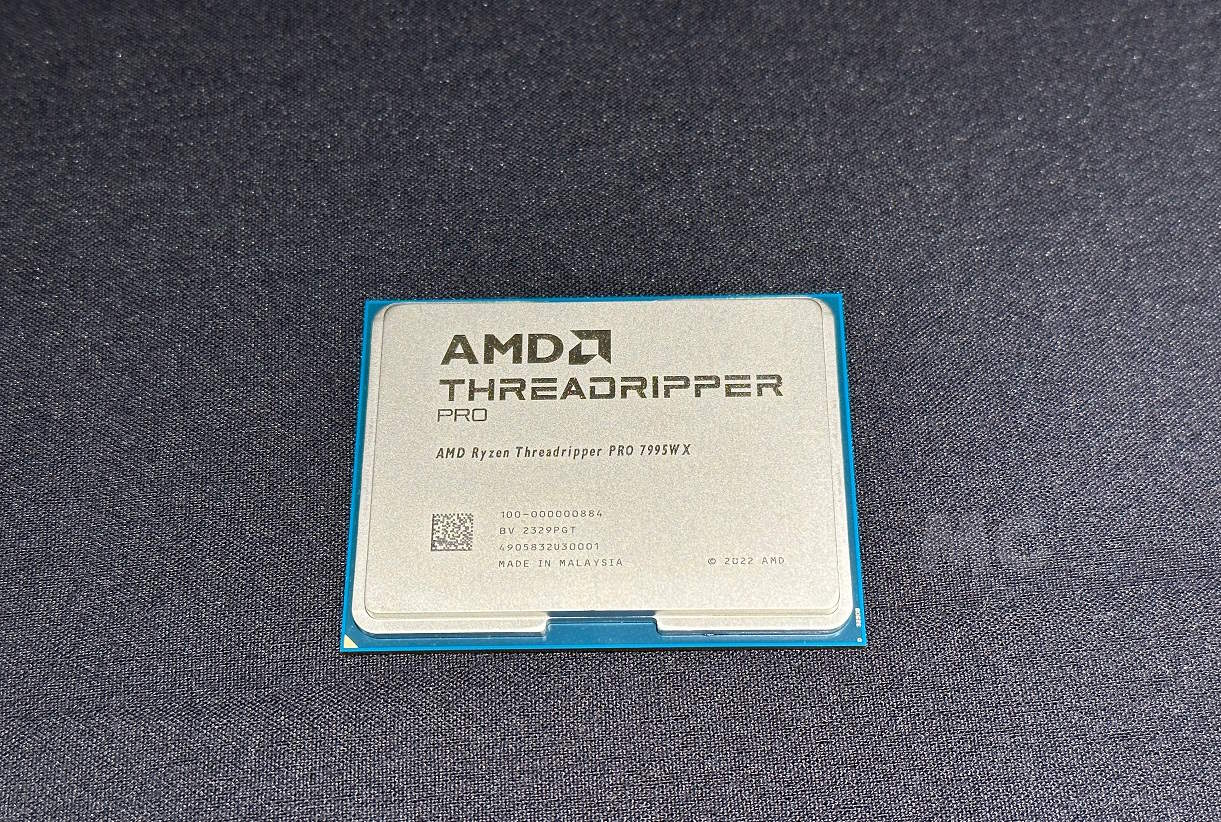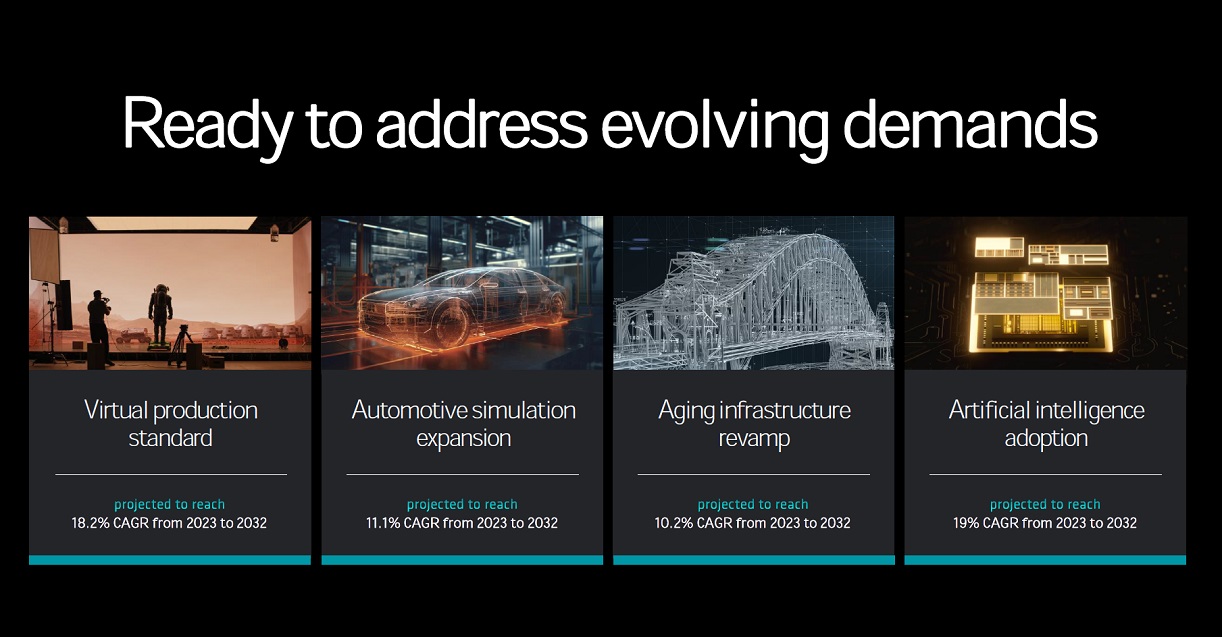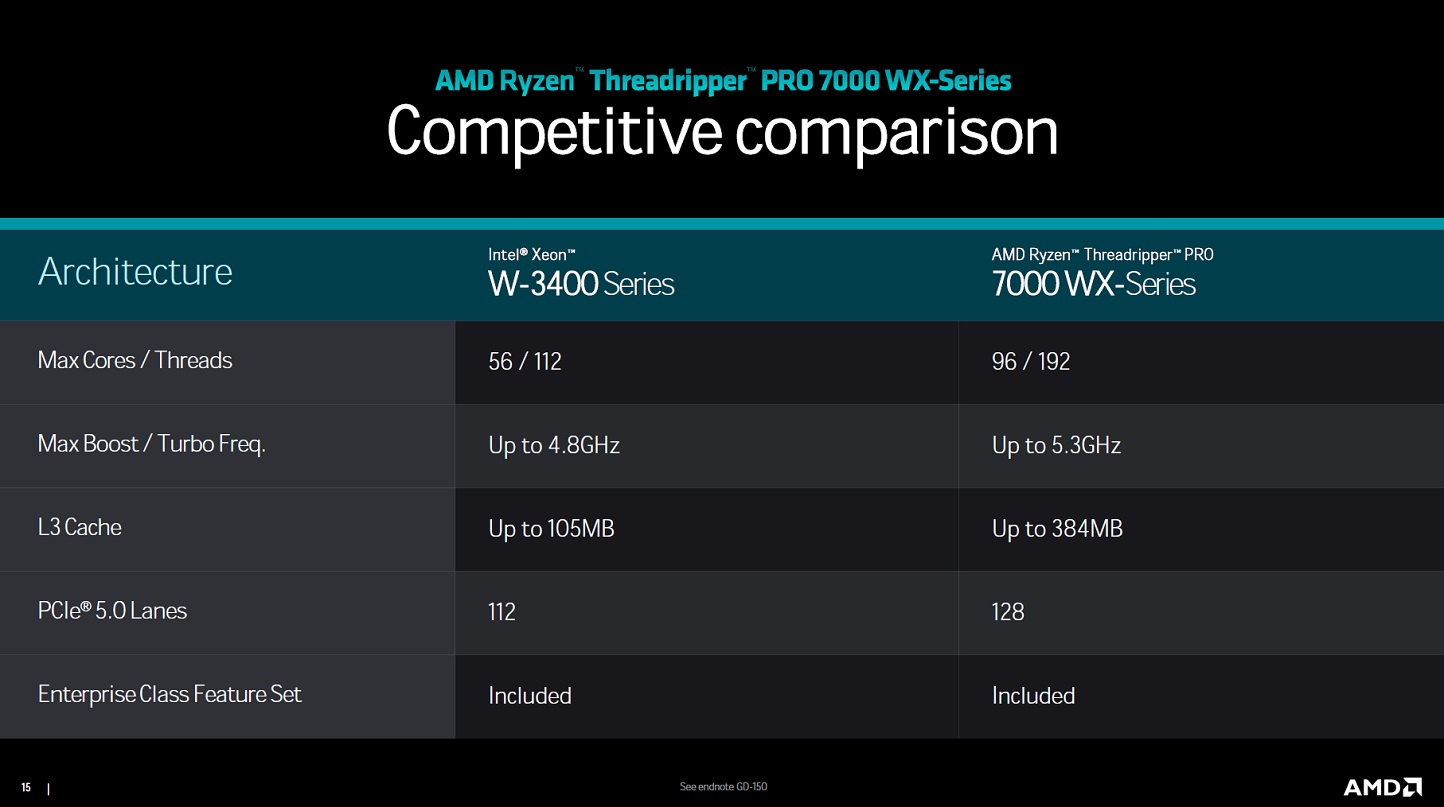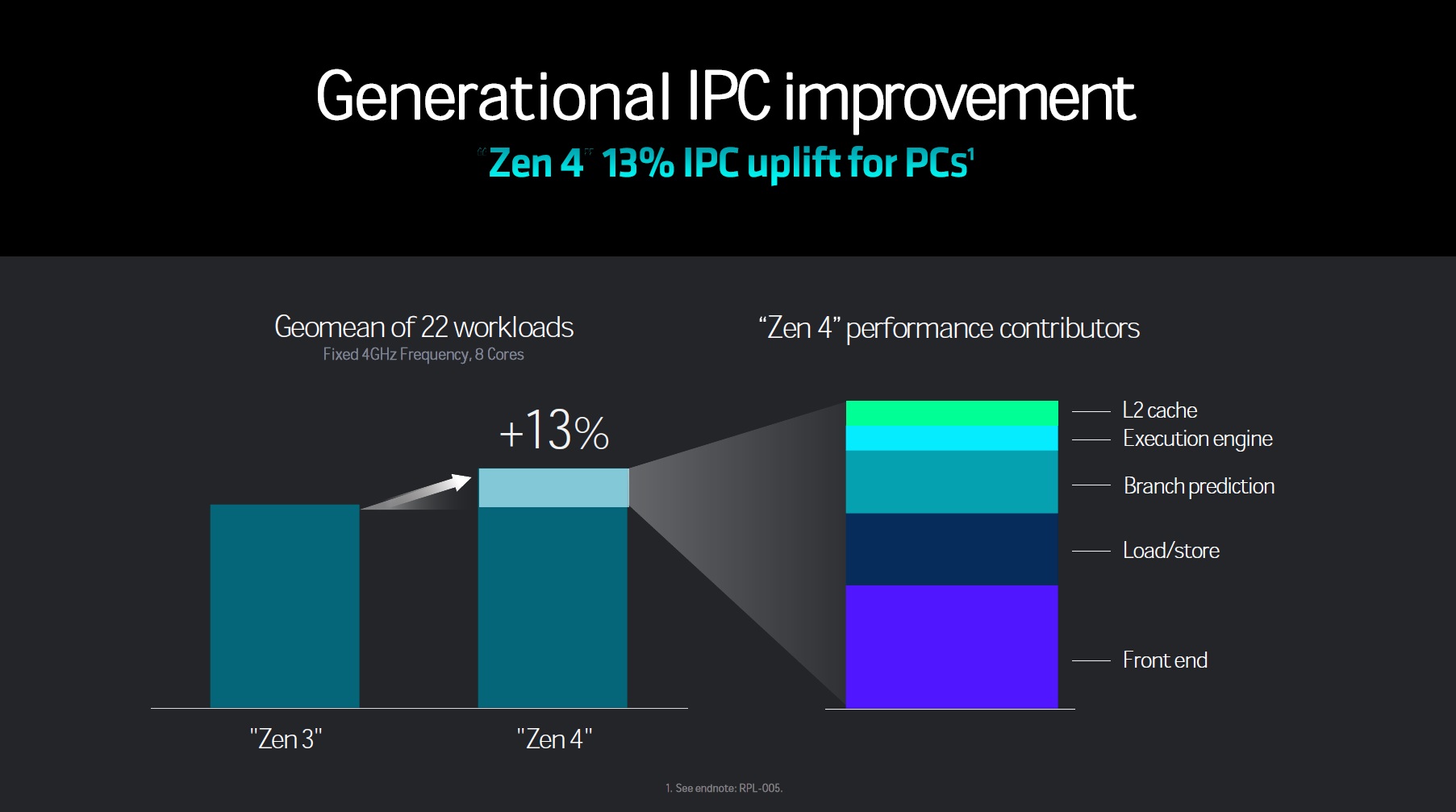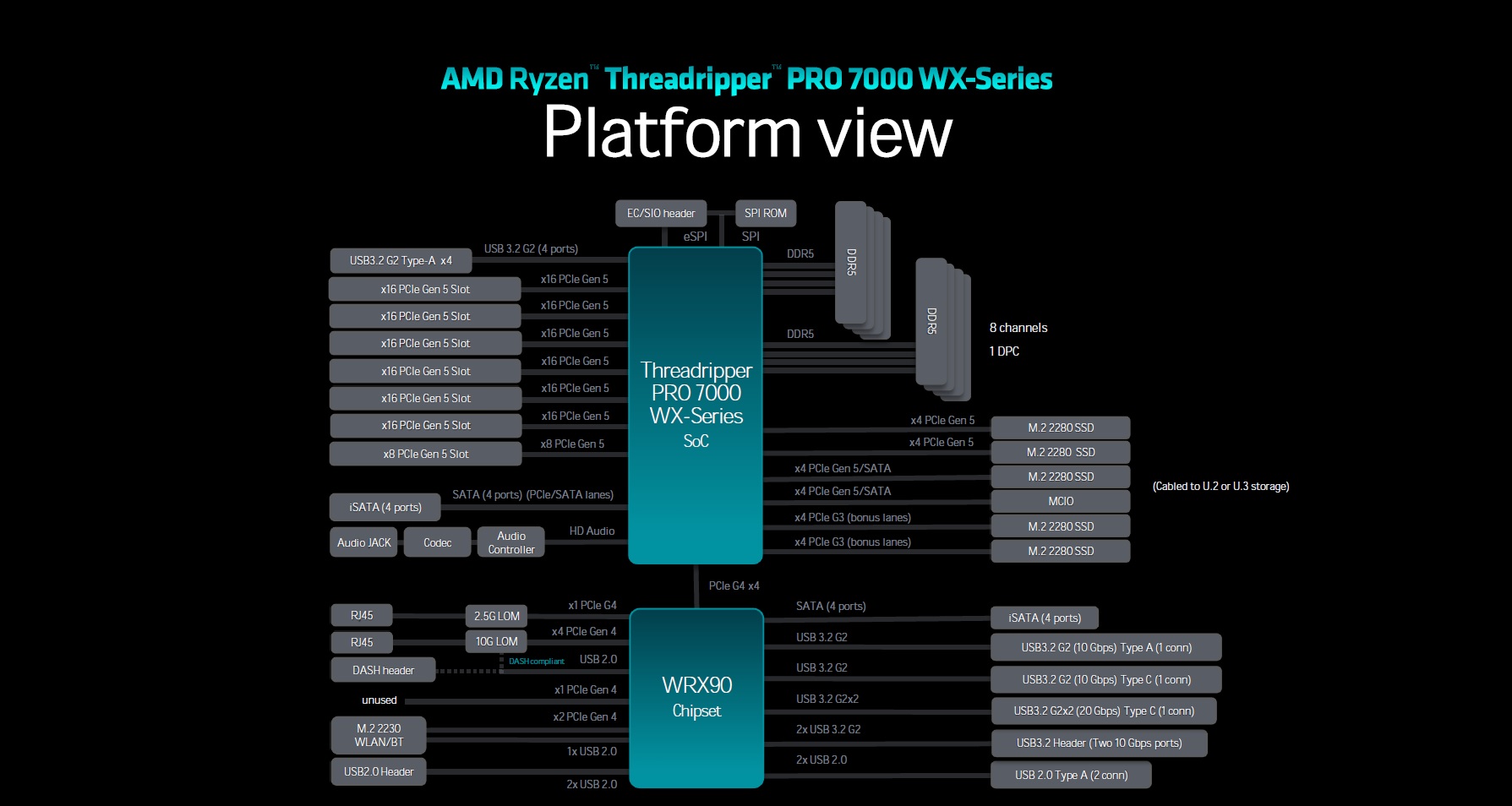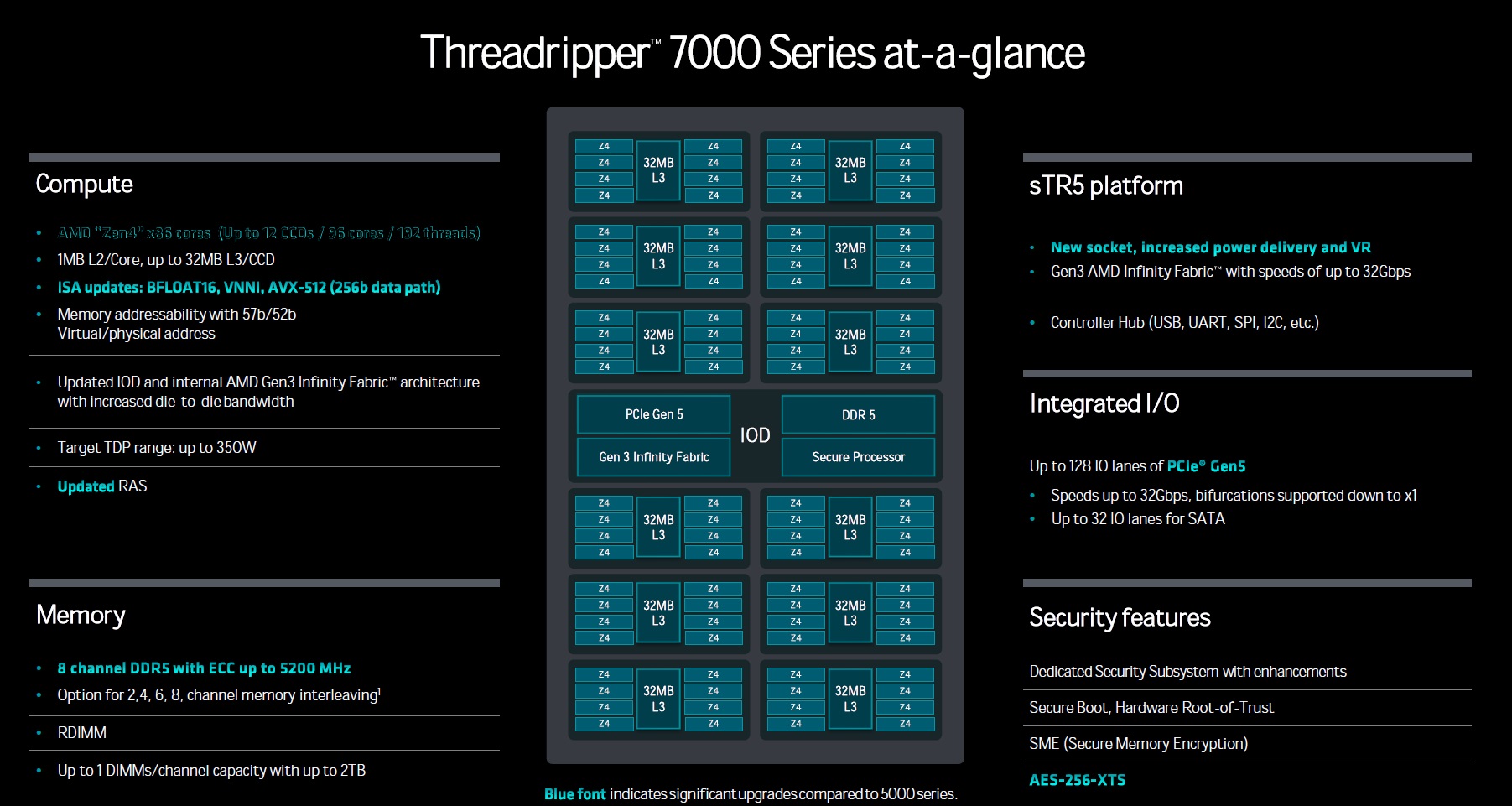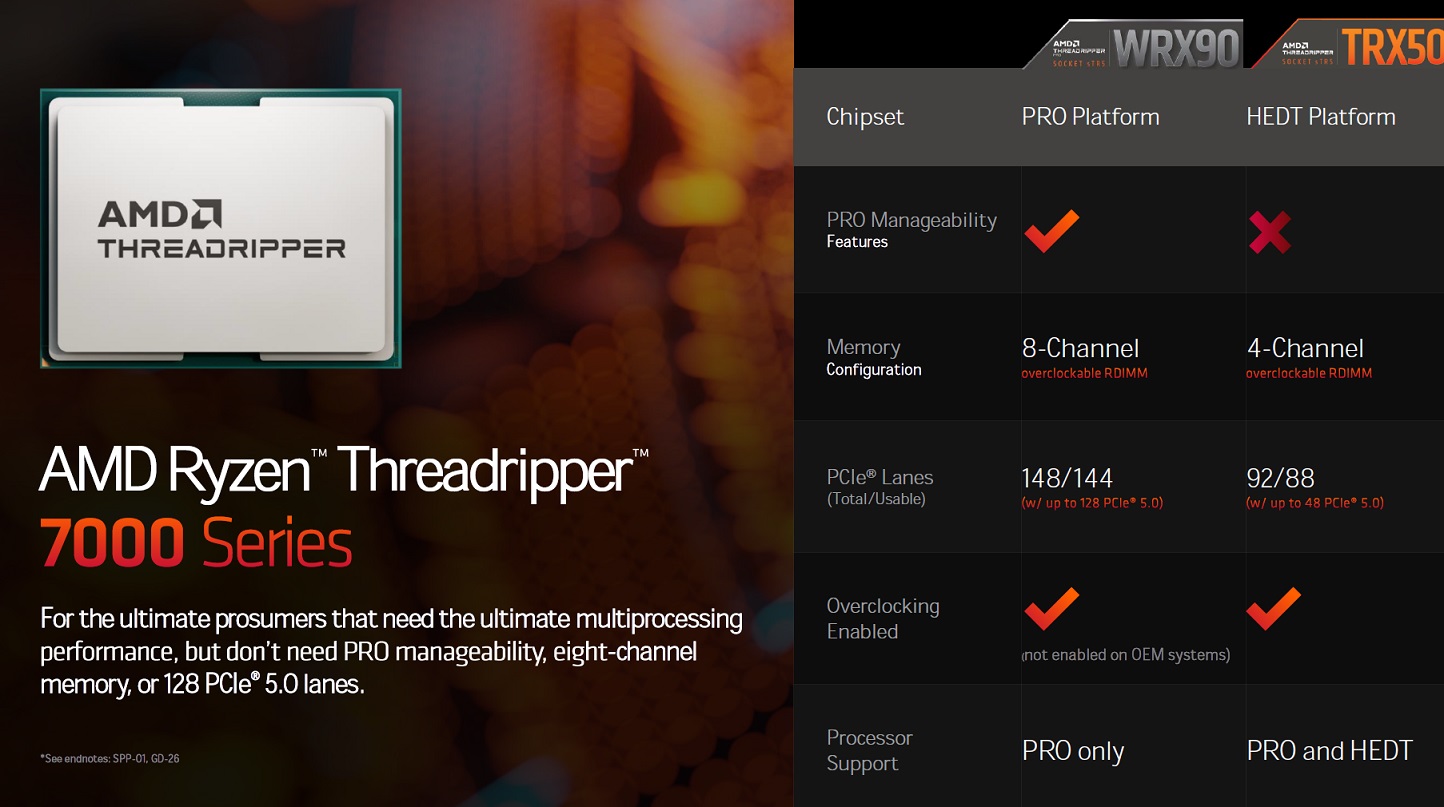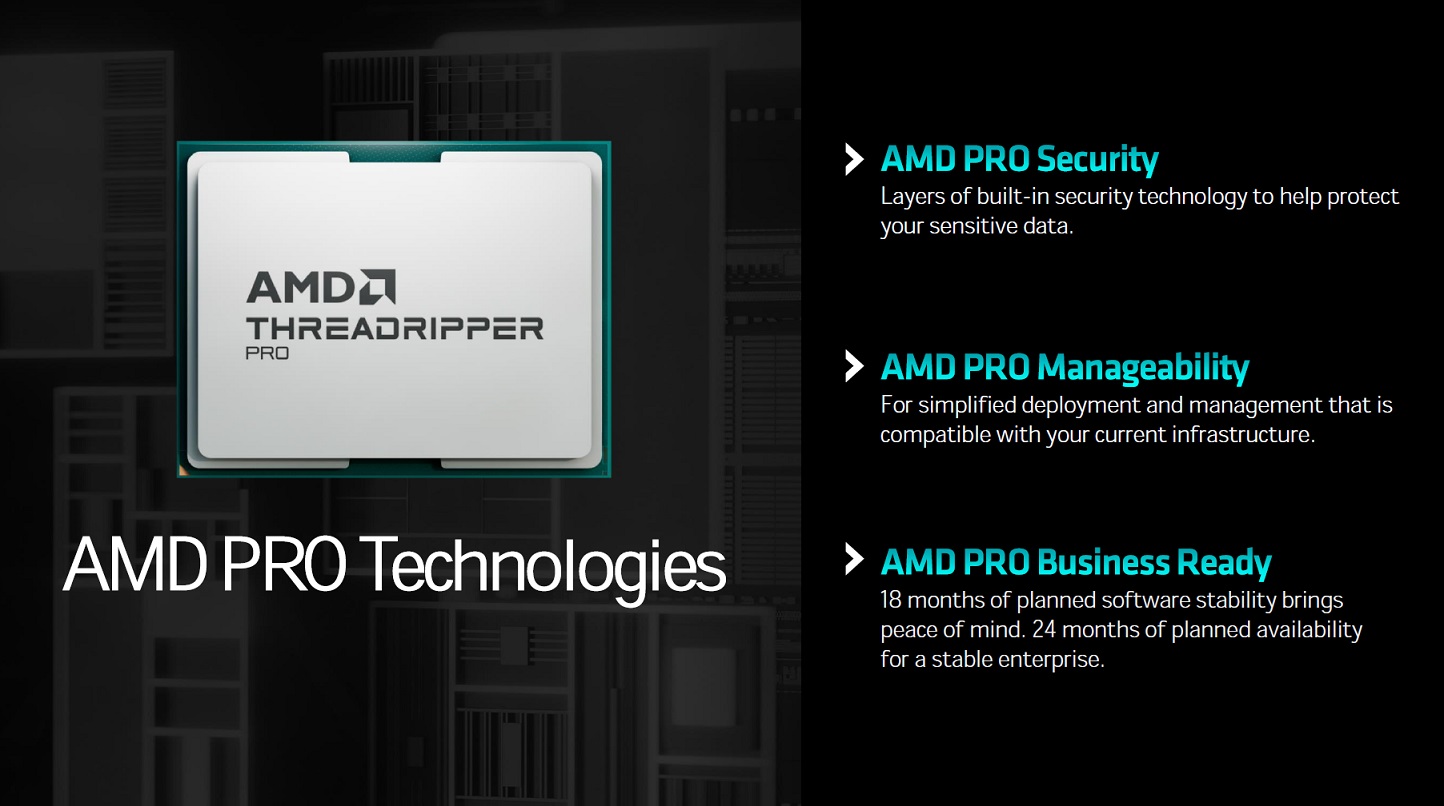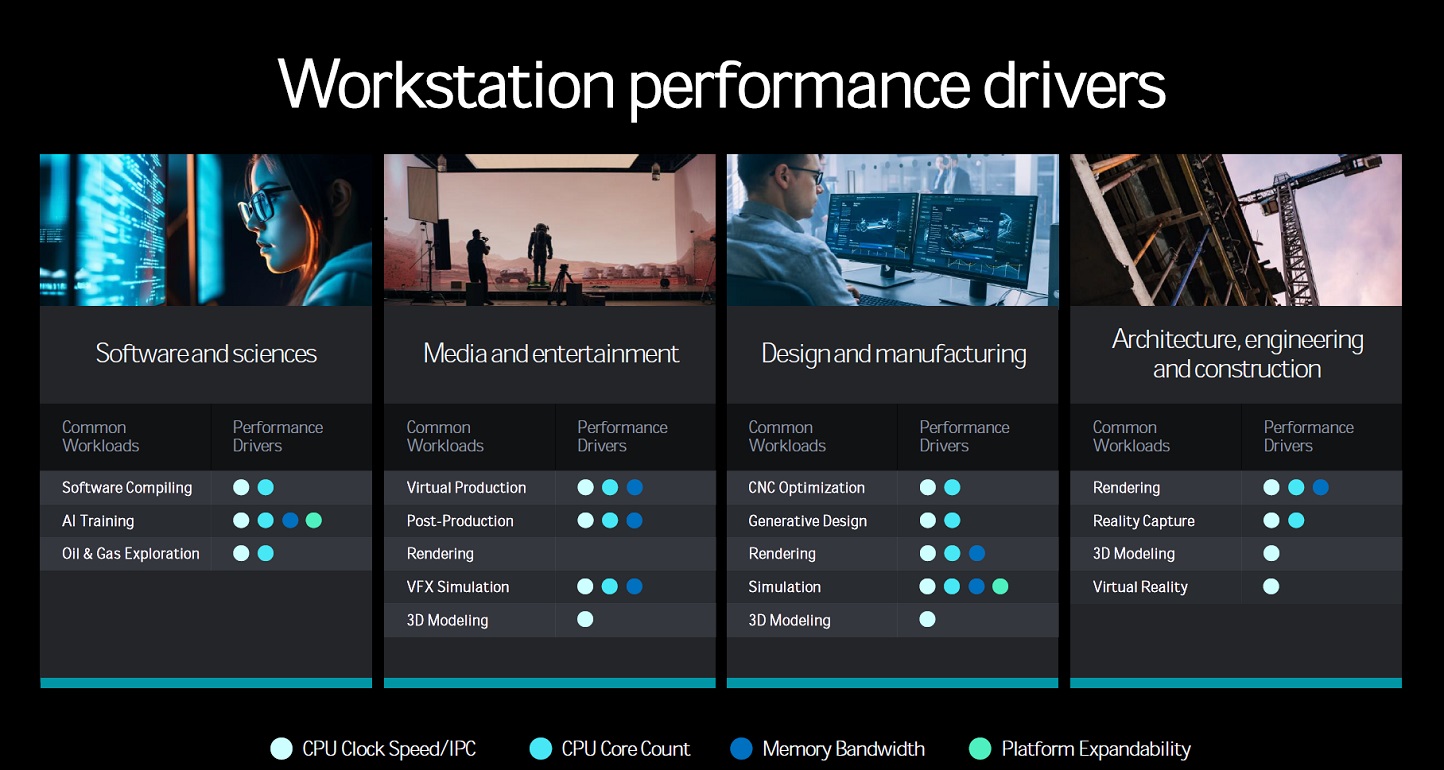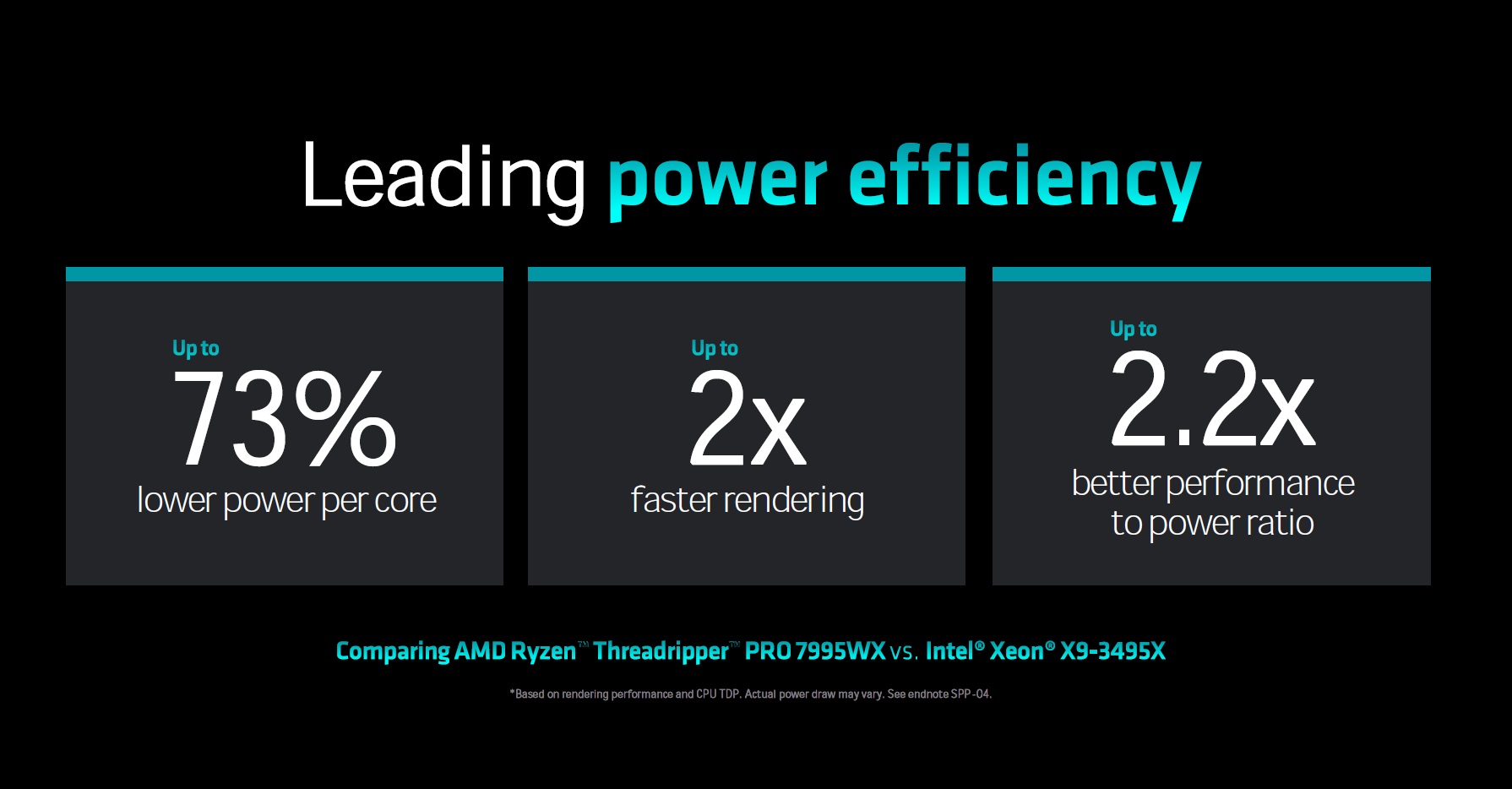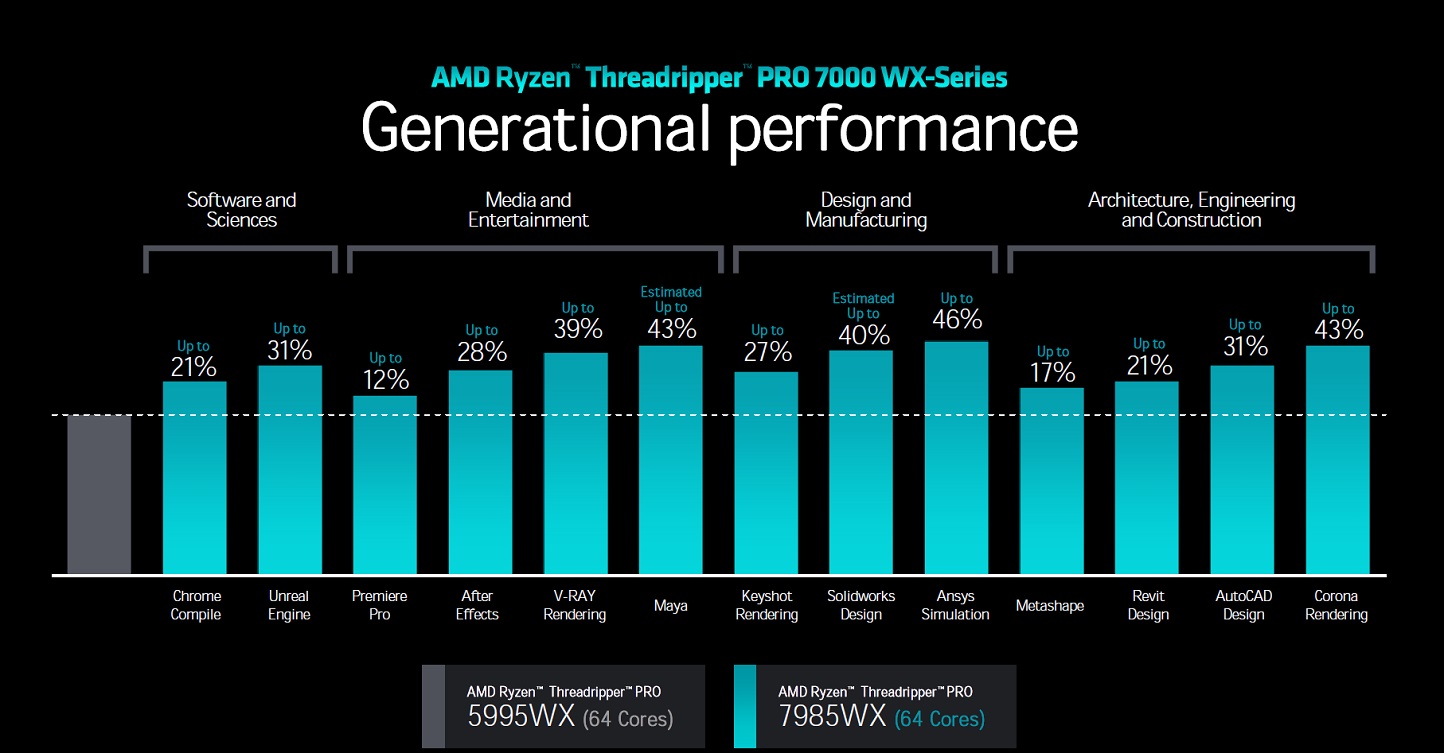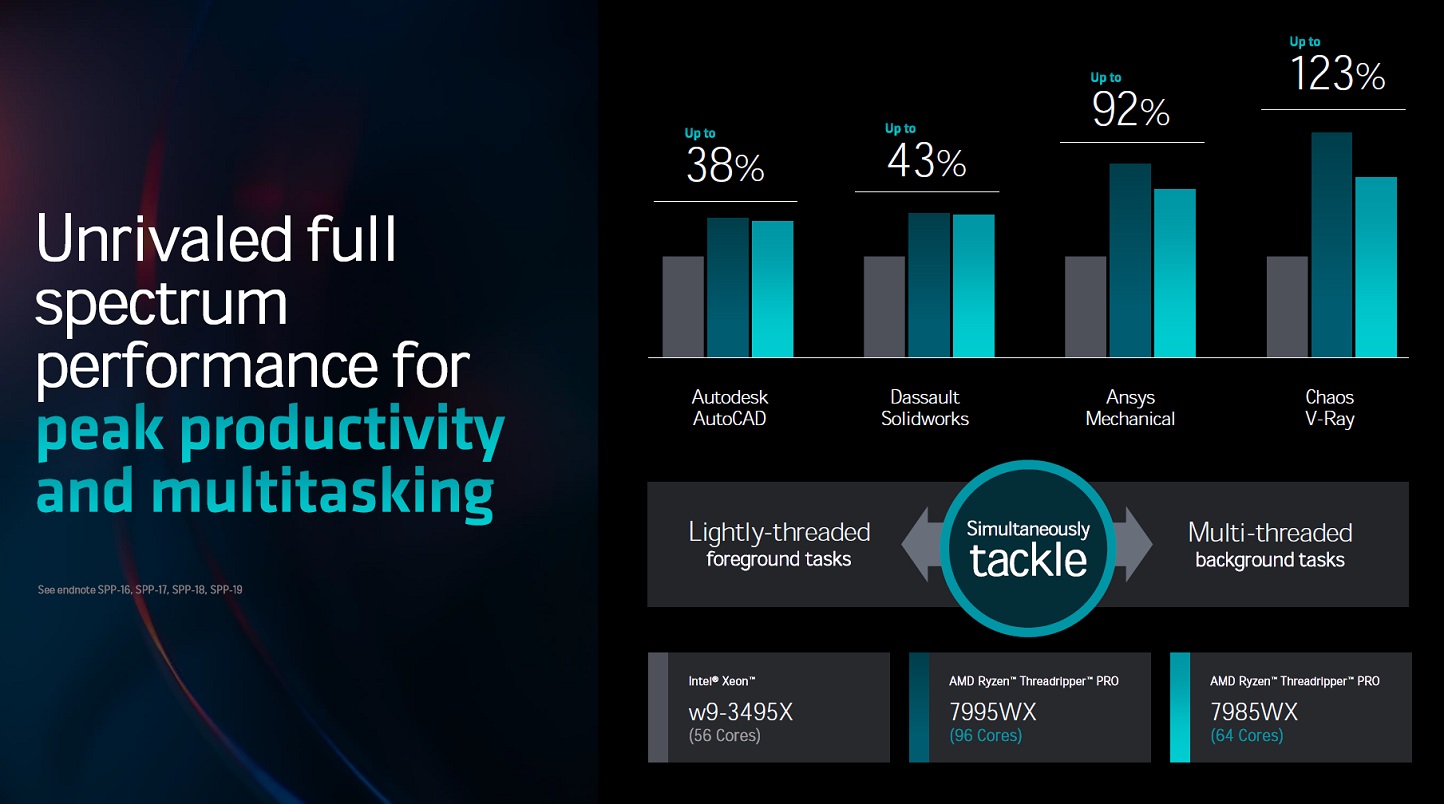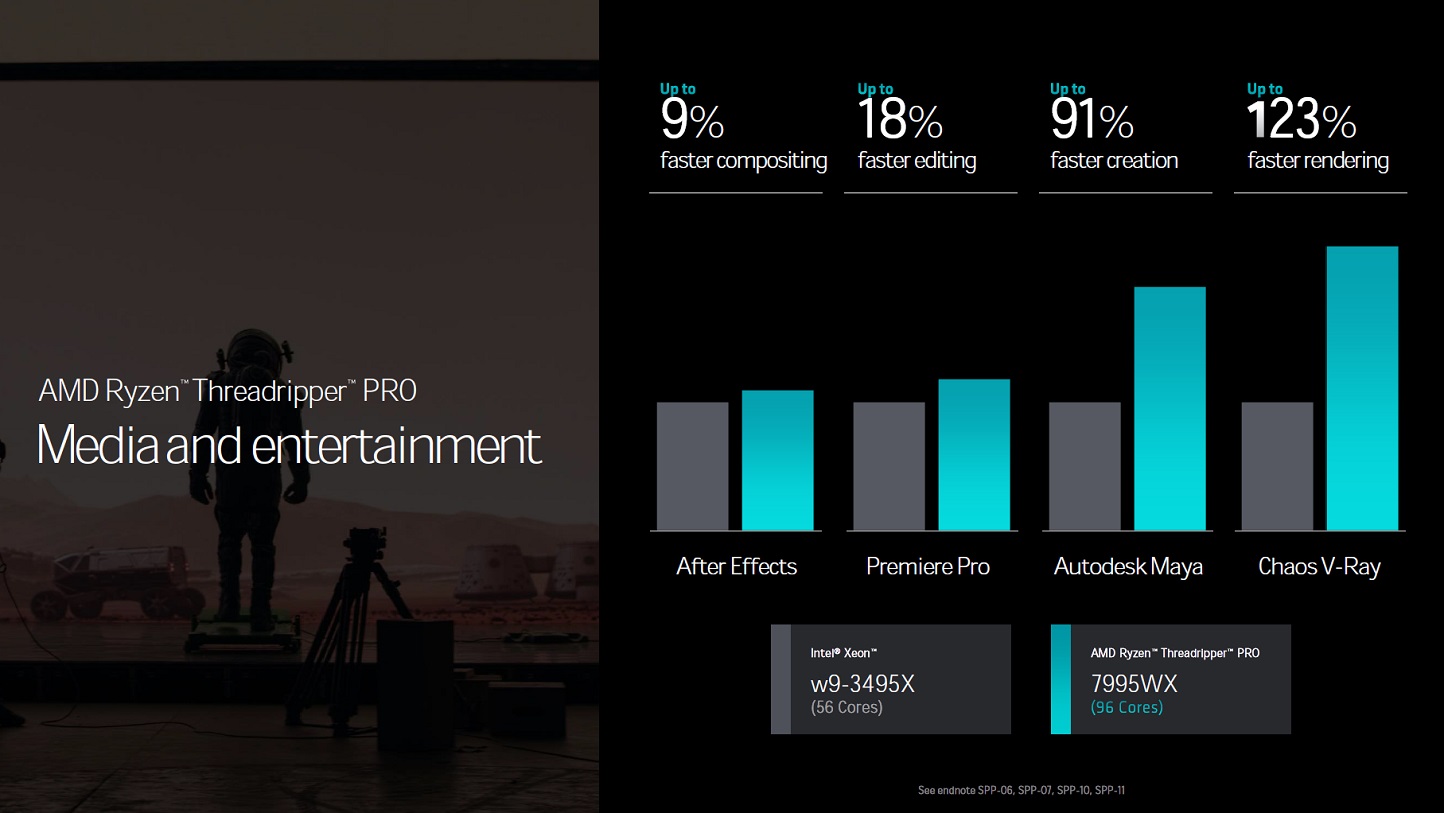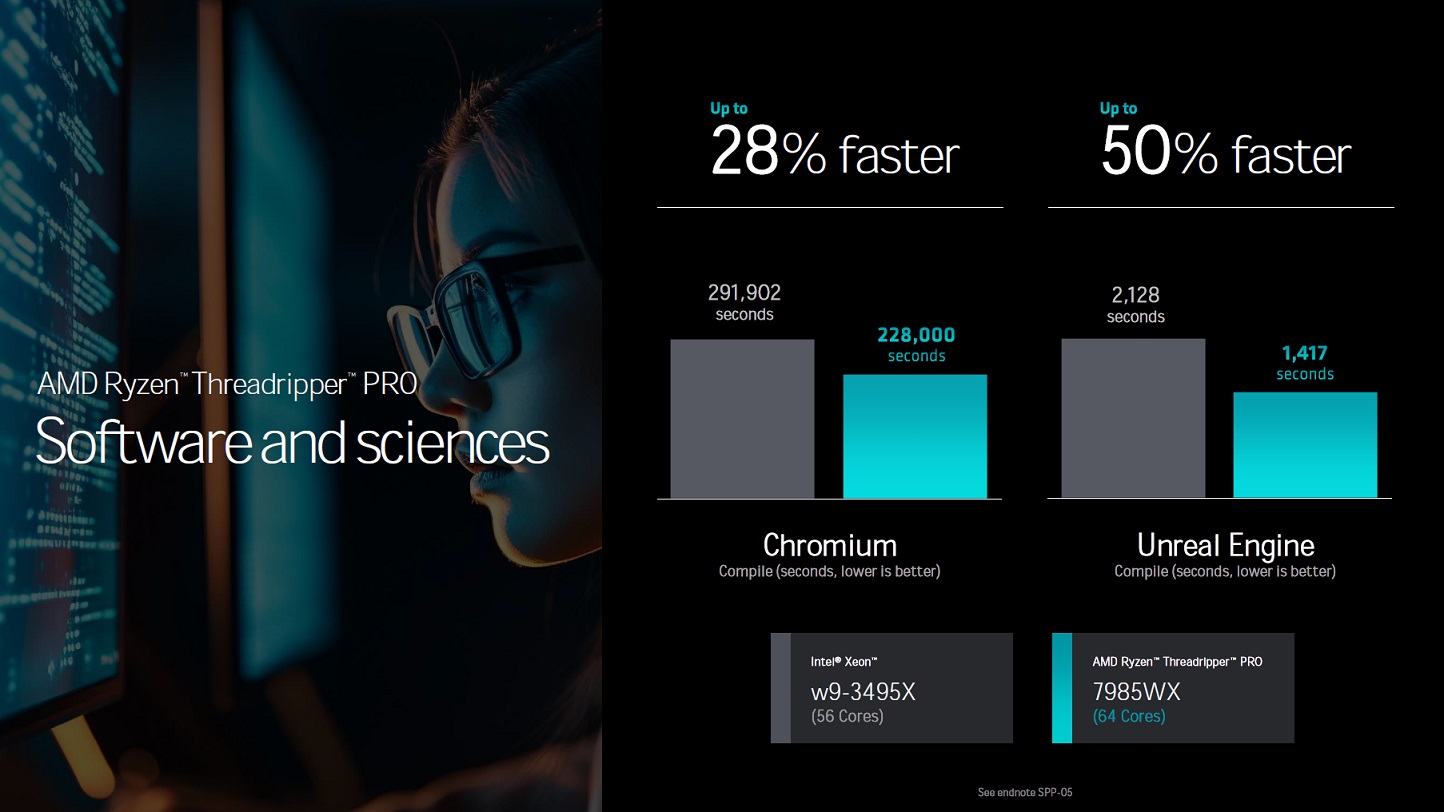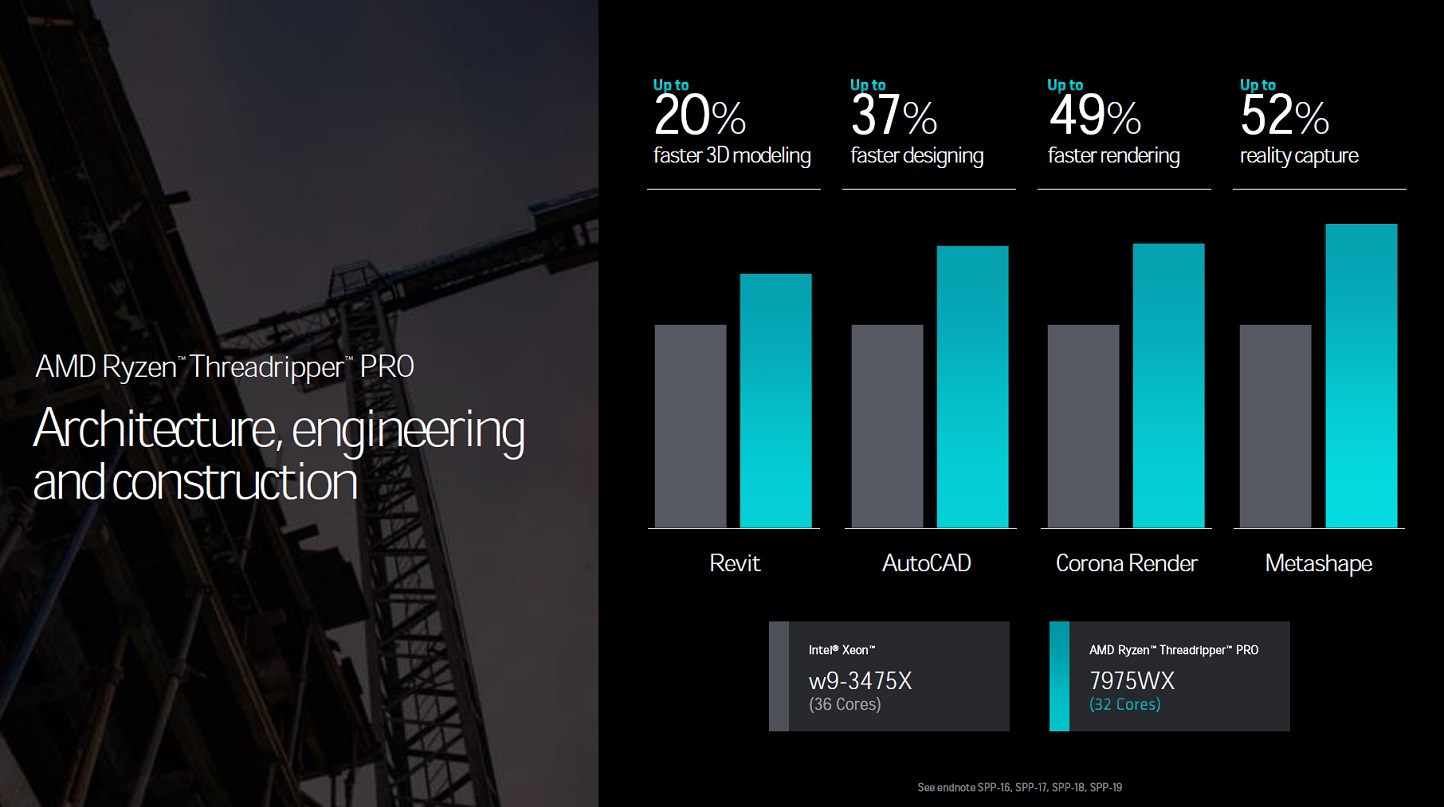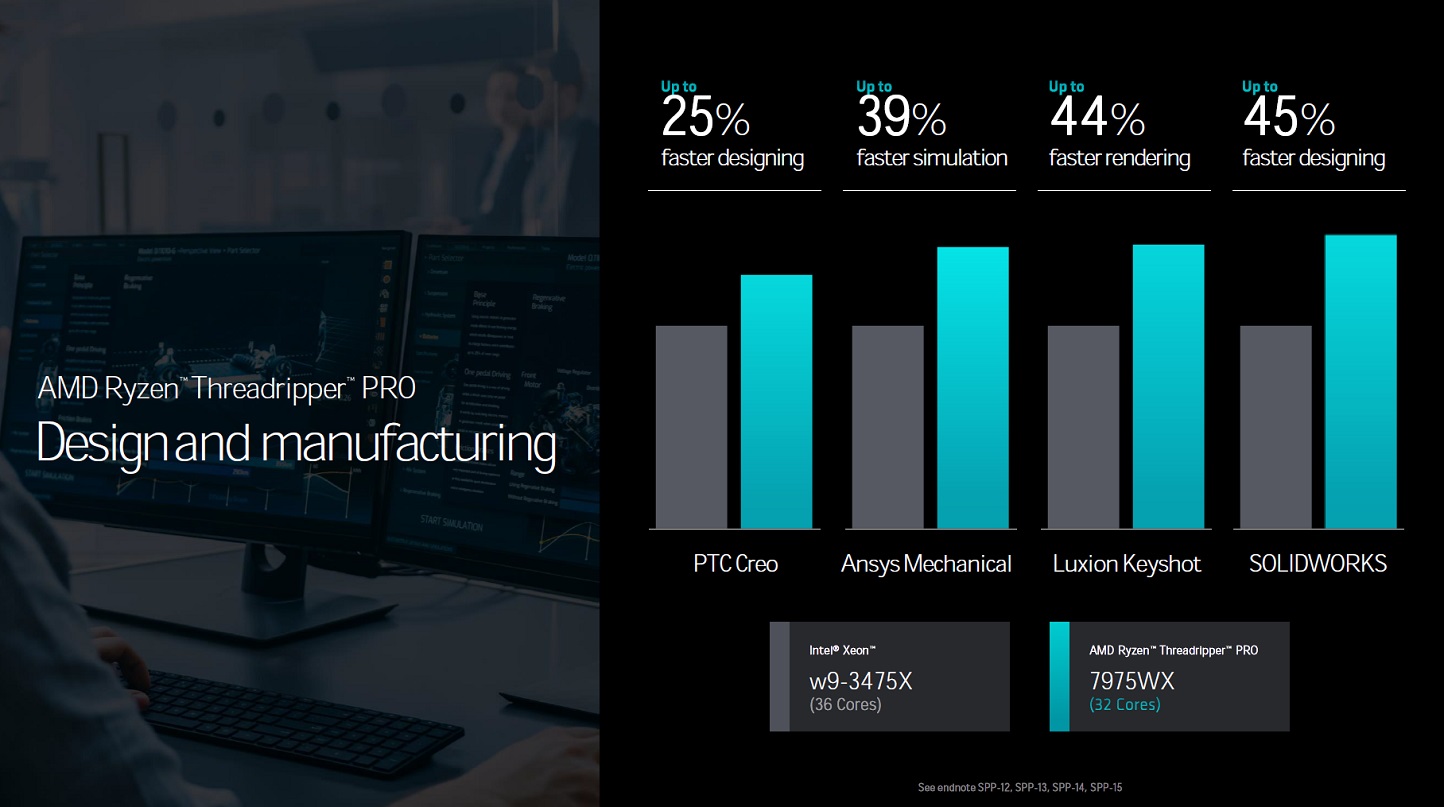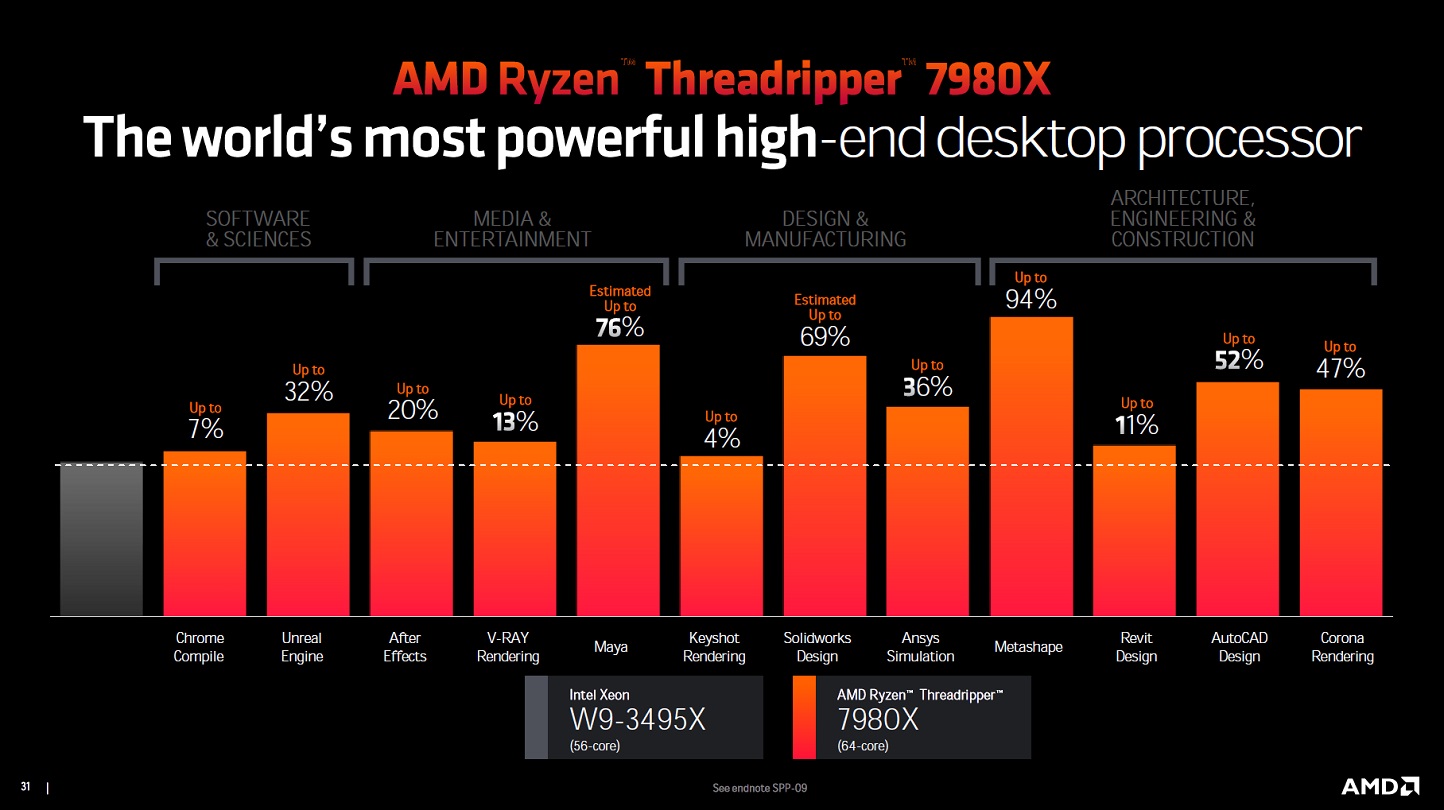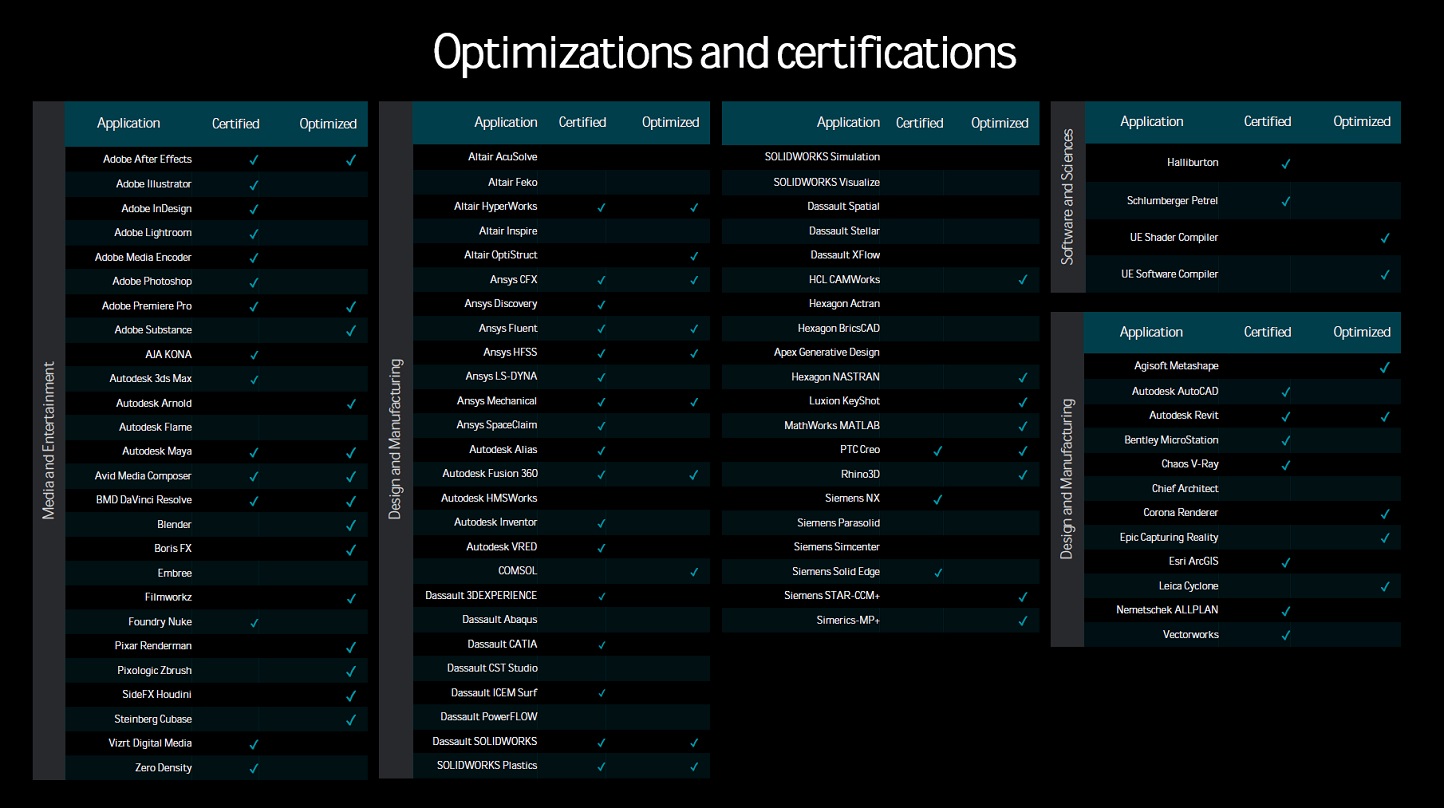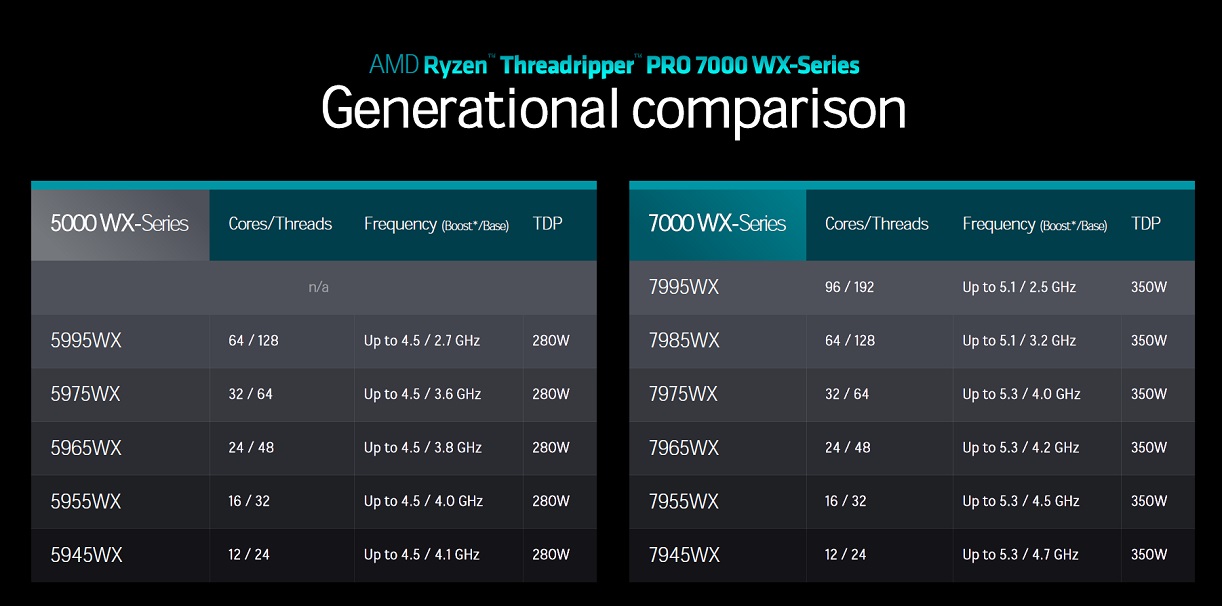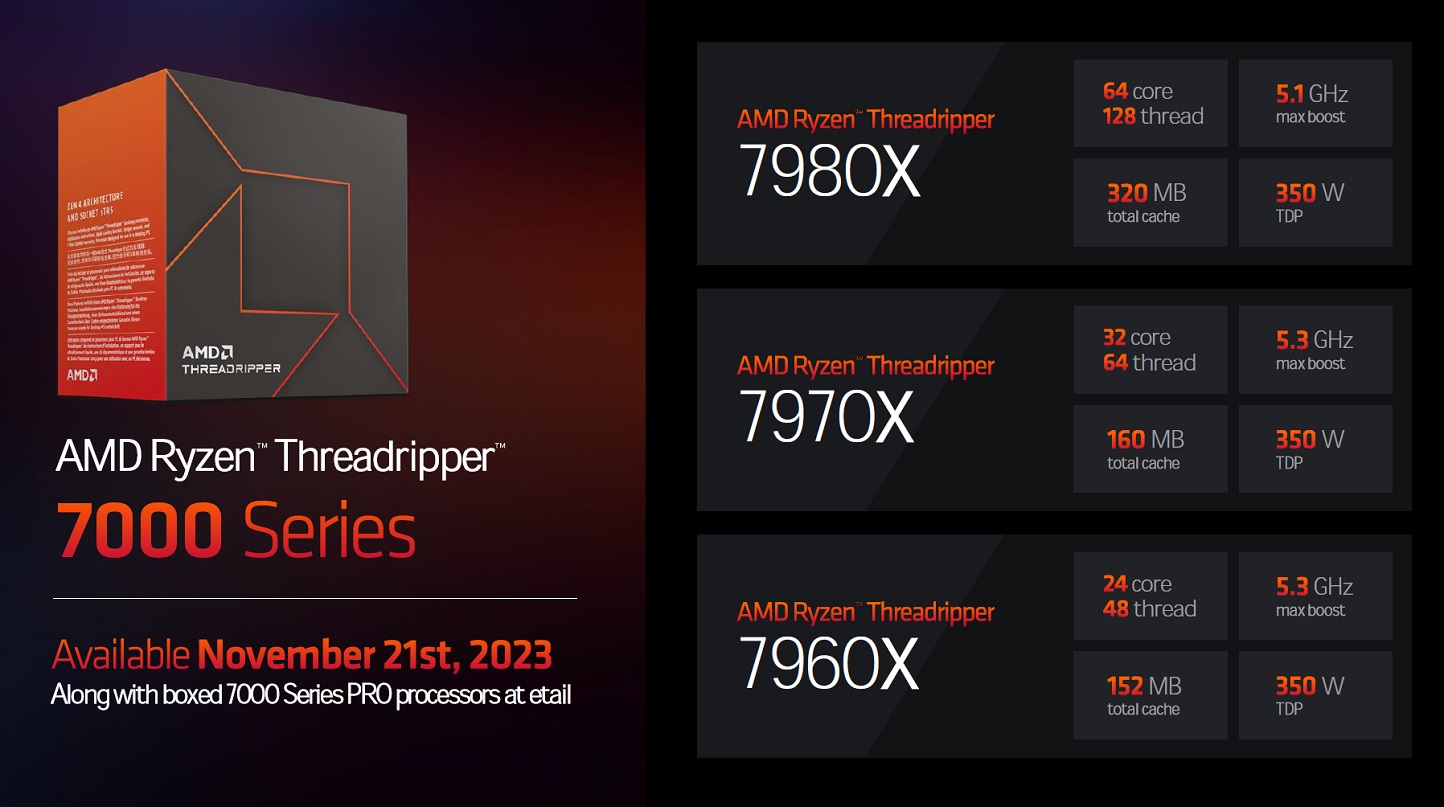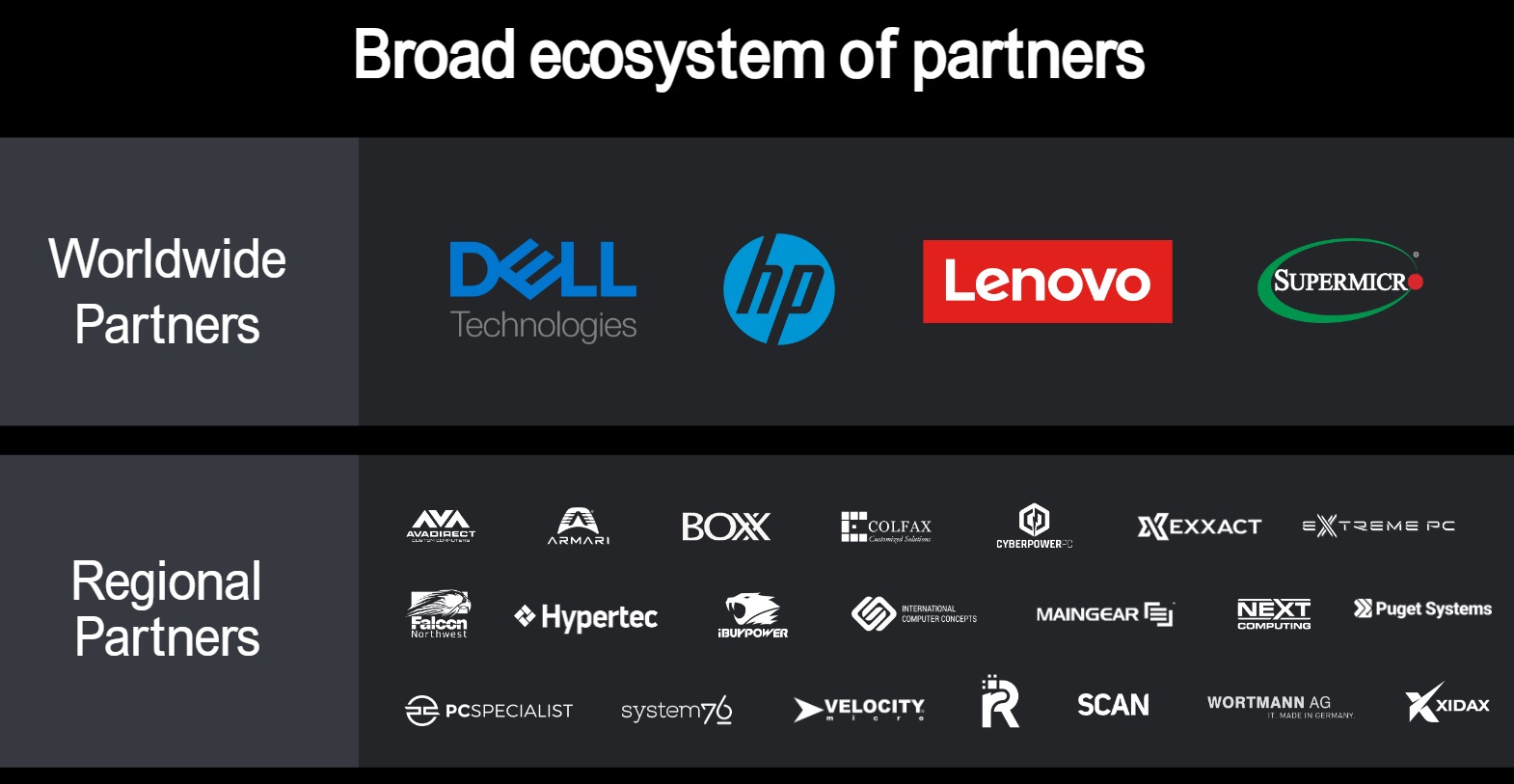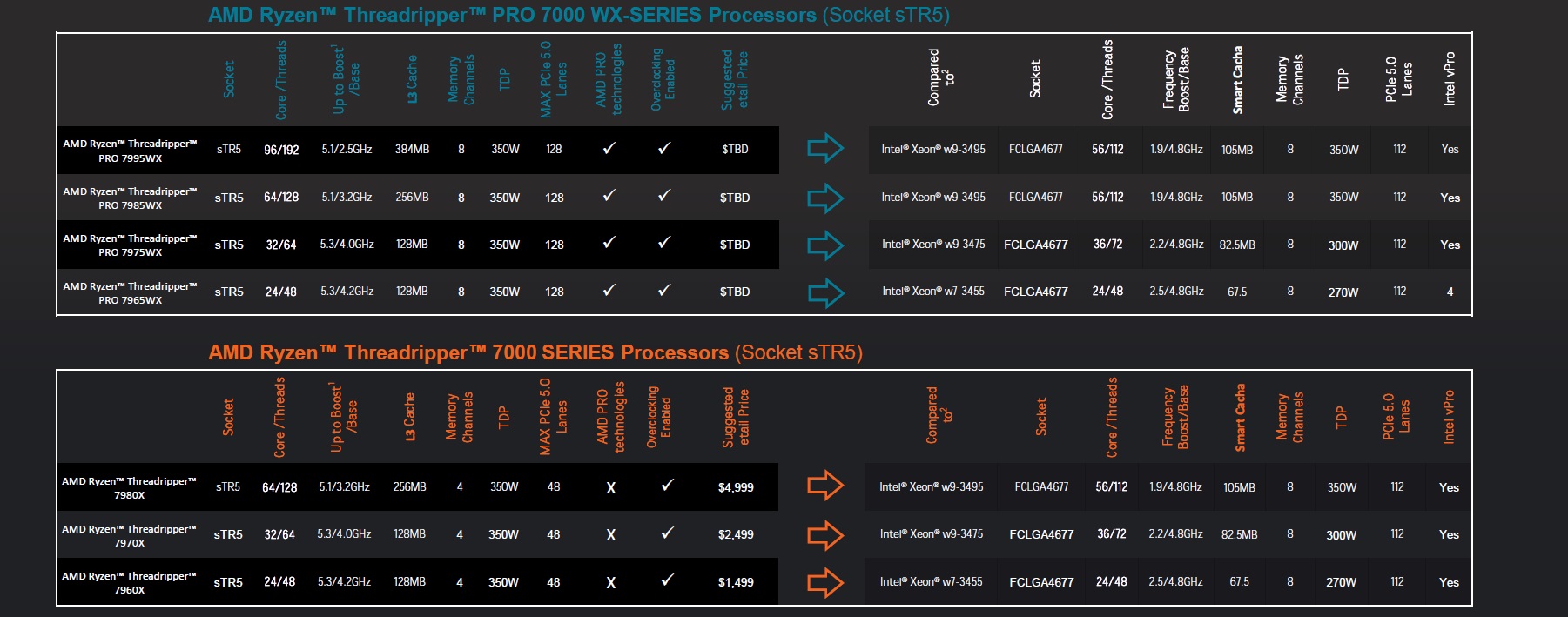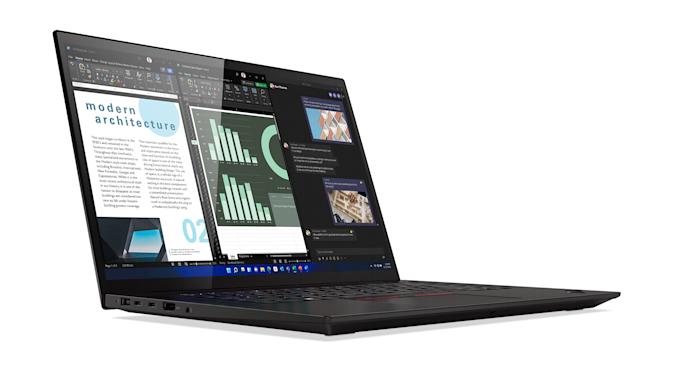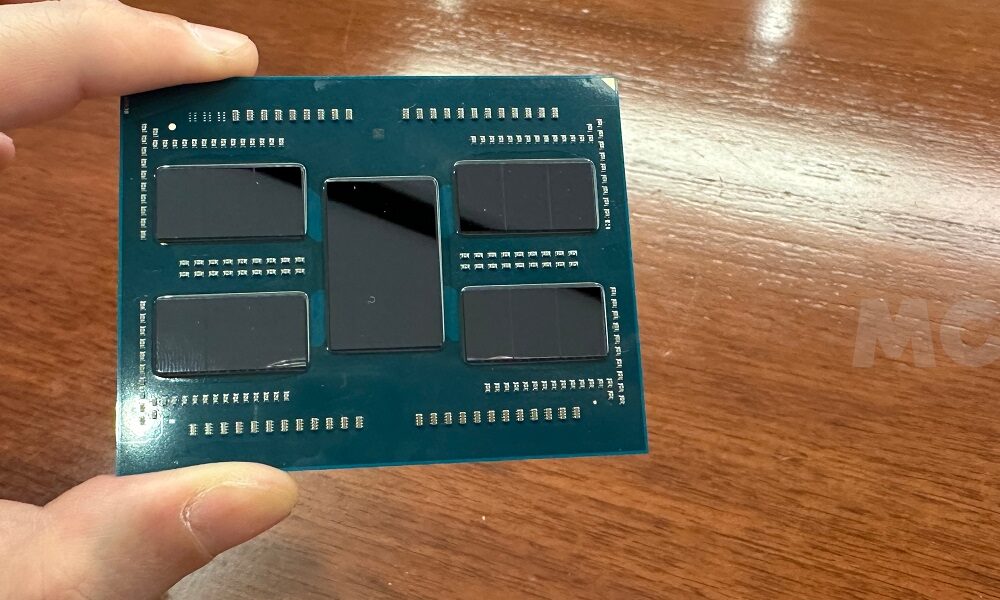
Last week we had the opportunity to attend a unique event at AMD’s offices in Austin, and in it we discovered all the keys to the Threadripper 7000a new generation of high-performance processors with which the Sunnyvale giant has taken an important step forward both in terms of performance and efficiency.
I remember perfectly when AMD introduced the first Threadripper back in 2017. This generation of processors were a true revolution and returned the company to the HEDT scene with a aggressive proposal in price-performance ratio.
The top of the range model was the Threadripper 1950X, a model that had 16 cores and 32 threads and that It was only $999.. For comparison purposes, the Intel Core i9-7960X, which was its direct rival and also had 16 cores and 32 threads, had an approximate price of $1,699 at its launch.
That price-performance value that AMD’s Threadripper range has always offered gradually improved thanks to the increase in the IPC with the Zen 2 and Zen 3 architectures, and also thanks to the increase in the maximum number of cores and its excellent performance per watt consumed ratio. Now, with the Threadripper 7000, the Californian company has achieved mark a new turning point, and it has done so in a big way.
AMD Threadripper 7000: prepared for any situation
With the new Threadripper 7000 processors, AMD has opted to offer a broad catalog of solutions to cover the different needs of consumers, independent professionals and companies looking for more than just raw power. Sectors such as audiovisual production, simulations in the world of driving, construction and infrastructure and artificial intelligence are some of those who will be able to get the most benefit to these new AMD processors.
The Threadripper 7000 processors use the Zen 4 architecture, which means that we have the same chiplet that we saw in the Ryzen 7000, and that it is configured with 8 cores and 16 threads, 8 MB L2 cache and 32 MB L3 cache. This chiplet is manufactured on TSMC’s 5nm node, while the I/O chiplet that integrates the entire connectivity subsystem and memory controllers uses TSMC’s 6nm node.
The Zen 4 architecture introduces important changes compared to Zen 3 that affect, among others, to the jump predictor, increases L2 cache to 1 MB per core, improves floating point units, adds deeper buffers across the core, introduces a larger op cache, also improves load and store and also introduces other improvements to the hierarchical cache system which allows a greater number of misses to be transferred from the L2 cache to the L3.
The result of all this is a CPI increase of 13% compared to the previous generation. If we add to this an increase in the maximum working frequency up to 5.3 GHz We find an important generational improvement. However, the improvements are not limited to raw performance, Threadripper 7000 maintains instruction support AVX-512, BFloat16 and VNNIand also presents advances at the SoC I/O and platform level.
The Threadripper 7000 uses the sTR5 platform, which means they require a new socket to function correctly. This is totally understandable considering the important changes that bring at the electrical levelthe increase in cores and threads and the DDR5 memory support. The list of new features we have at the platform level is very extensive, but don’t worry, I leave you a summary below with the most important keys:
- Supports DDR5 memory with ECC (error correction) technology in up to eight channels at a maximum of 5,200 MHz. Allows you to use 2, 4, 6 and 8 channel interlaced modes to improve performance based on each workload.
- Up to 2 TB of RAM, RDIMM support. This support for up to 2 TB of RAM makes them an interesting option for move very large AI models.
- Up to 128 PCIe Gen5 lanes.
- Improved hardware security and AES-256-XT encryption.
Taking stock of everything we have said, this translates into 13% more IPC and 17% more speed of work compared to the Threadripper 5000, up to 50% more threads available thanks to the jump to a configuration of 96 cores and 192 threads, greater bandwidth and improvements in efficiency, up to 90% I/O bandwidth per slot and 60% more L2 + L3 cache.
AMD has divided the new Threadripper 7000 into two versions, the WX line, which is aimed at workstations, and the HEDT, which is aimed at the HDET sector. They both use the same platform, but they have some important differences that we must take into account. The HEDTs have a maximum configuration of 64 cores and 128 threads, can work with quad-channel DDR5 memory and offer up to 48 PCIe Gen5 lanes.
These differences are totally understandable because, in the end, although both series start from a common base They target different user profiles that have different needs. However, AMD has confirmed that we can use the HEDT platform to mount WX processors, which means that if we need it we can easily install a model with 96 cores and 192 threads. Well played, without a doubt.
How could it be any other way, the Threadripper 7000 Pro They also maintain all the keys at the management and support level to facilitate its implementation and use. This further reduces integration costs, allows you to get the most out of them from the first minute and gives companies greater peace of mind during that first critical stage of investment amortization.
Performance and efficiency go hand in hand in the Threadripper 7000
After that introduction in which we have analyzed the most important technical keys of the Threadripper 7000, we now have to look at some performance data, and we will also talk about efficiency. AMD has introduced improvements in power management that have allowed it to improve performance per watt, and that place these new processors as a powerful option with a lower cost of ownership.
According to official data provided by AMD, a Threadripper 7995WX can consume up to 73% less per core than an Intel Xeon W9-3495X, and despite everything it would be able to double its rendering performance. With these data on the table, the performance per watt ratio of the Threadripper 7995WX would be 2.2 times better than that of the Intel Xeon W9-3495X.
Taking a look at the performance we see that a Threadripper 7985WX, which would be the natural successor by core and thread count of the Threadripper 5995WX (64 cores and 128 threads), can outperform this by up to 46% in Arsys Simulation, and that in the rest of the tests the improvement fluctuates between 12% and 43%. This performance improvement has been possible thanks to the increase in the CPI and the increase in the working frequency, mainly.
If we compare the Threadripper 7995WX with the Intel So, for example, the Threadripper 7995WX outperforms the Intel Xeon W9-3495X by 38% in Autodesk AutoCAD, but the difference is up to 123% in Chaos V-Ray.
In other sectors, such as software and science, and also in audiovisual production, the differences are also very marked. For example, working With the Unreal Engine we can achieve a performance improvement of up to 50% with a Threadripper 7985WX compared to the Intel Xeon W9-3495X, and in content creation the Threadripper 7995WX surpasses the Intel
Sectors such as design and manufacturing, construction, engineering and infrastructure creation can also greatly benefit from the improvements brought by AMD’s Threadripper 7000. Look at the attached graphs, we have improvements of up to 45% in performance with SolidWorks and up to 49% in Corona Render and 52% in Metashape. These are impressive data, especially if we take into account that an Intel Xeon W9-3475X has been compared, which has 36 cores and 72 threadswith a Threadripper 7975WX, which has only 32 cores and 64 threads.
In the last graph you can find a comparative summary of the performance of the Threadripper 7000 in different sectors. You can enlarge it by clicking on it. I also leave you another graph where you can see a comparative performance test using the Threadripper 7000 HEDT.
When we talk about professional processors, the issue of certifications and optimization is key to guaranteeing total stability and a high level of performance. AMD is aware of this, and that is why with the new Threadripper 7000 it has greatly expanded its list of certifications and optimizations with the main platforms, tools and professional applications.
Models, availability and prices
AMD has confirmed that the new Threadripper 7000 will be available from November 21 in stores, which means we’re still more than a month away from its official launch. However, OEM workstations and equipment could hit the market a little sooner. In the first image you can see the set of models that will shape the Threadripper 7000 Pro series, although we still do not know the recommended sales prices.
Regarding the Threadripper 7000 HEDT, AMD has confirmed that will launch a total of three models configured with 24 cores and 48 threads, 32 cores and 64 threads and 64 cores and 128 threads. You can also see its complete specifications in the attached image, where both the working frequencies and the TDP and the caches appear.
For this launch AMD will have the support of its main international partners, among which are names of such important giants as Dell, Lenovo and HP. In the image we can also see the names of some of its key partners at the local level (United States).
To expand the information I leave you a last image where they appear recommended prices of the Threadripper 7000 HEDT. I don’t have the prices in euros, but don’t worry, I promise I will update this article if I receive them at some point. You can enlarge the last image, and all the images in the article, by clicking on them.
